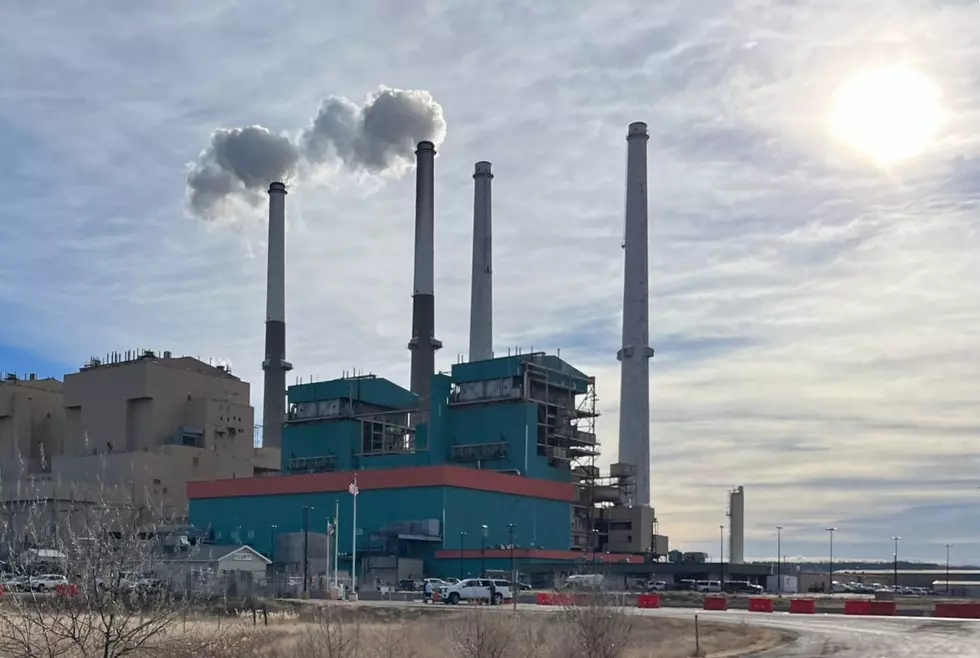
Climate Connections: NW Energy plan endangers climate, increases bills
Nick Fitzmaurice
Worried about your escalating energy bills? NorthWestern Energy’s failure to plan for a clean, affordable energy future puts grid reliability at risk and unnecessarily burdens Montana ratepayers.
In October, the Montana Public Service Commission (PSC), the regulatory body overseeing monopoly utilities, approved an enormous 28% rate increase to NorthWestern’s residential electricity customers. And this increase doesn’t even include costly capital investments that NorthWestern Energy has outlined in its most recent 20-year energy plan.
The world of utility regulation may not seem exciting, but what happens at the PSC has critical implications for our climate - and our pocketbooks. It’s essential that Montanans are paying attention and making our voices heard to ensure the PSC does its job.
NorthWestern Energy’s latest energy plan - called an Integrated Resource Plan (IRP) – is required by Montana statute at least every three years and outlines a utility’s plans to meet energy demands over the next 20 years. The purpose is to ensure that utilities are prepared for the future and are able to provide reliable, affordable power that is in the public’s best interest. The PSC is required to provide comments on every IRP, and ultimately is responsible for identifying deficiencies for NorthWestern to address in future planning cycles.
Here’s where it gets interesting. On February 23, the PSC’s staff submitted draft comments on NorthWestern’s IRP to the five elected Commissioners. The PSC staff, after a thorough review of the plan and public comment, denounced NorthWestern’s 2023 IRP as unsatisfactory, pointing out that “while the 2023 Plan claims to provide greater detail regarding modeling assumptions compared to the 2019 Plan, the Commission finds the 2023 Plan less transparent, accessible, and analytically rigorous than Montana’s planning statutes and the Commission’s 2023 planning rules require.”
In fact, there are a number of ways NorthWestern’s 2023 IRP doesn't measure up. The plan includes the construction of the Yellowstone County Generating Station (YCGS) methane plant near Laurel, which the utility plans to fire up this year. By NorthWestern’s most recent estimates, YCGS’s final construction bill will be between $310 million and $320 million. If approved by the PSC, these expenses, plus a hefty rate of return, and the operating, fuel, and maintenance costs for the lifetime of the plant will be passed on to Montana ratepayers, to the tune of over $2 billion in the coming decades. That’s not affordable power.
NorthWestern Energy also indicated its intentions to acquire additional ownership in the Colstrip coal-fired power plant. This will further burden ratepayers, and PSC staff pointed out that NorthWestern’s IRP “does not provide complete information regarding assumptions for future coal prices and capital expenditures associated with the Colstrip facility, despite the prominence of scenarios designed to evaluate potential retirement timeframes.” Not only are these investments costly for Montana ratepayers, but they will also cause additional harm to our life-sustaining climate.
The PSC staff’s critique of the IRP couldn’t have been more clear - which is why it was so disappointing that at the PSC’s March 26 meeting, the elected PSC Commissioners voted to approve a heavily edited version of the staff memo, watering-down staff’s findings and devaluing the importance of public participation and transparency throughout the IRP process.
The reality is that clean and affordable energy alternatives are available today, with wind and solar far surpassing coal and gas for affordable energy generation, yet NorthWestern Energy continues investing in expensive and environmentally damaging fossil fuel infrastructure.
Following January’s extreme cold snap, NorthWestern Energy claimed that access to more fossil fuel resources is necessary to ensure grid reliability and save ratepayers money. However, while Montana gas and coal were operating below full capacity, it was solar energy from the southwest that helped to keep our lights on during this extreme weather event.
What about NorthWestern’s claim that renewable energy sources are too intermittent to provide significant amounts of power to the grid? This ignores the fact that wind and solar energy are complementary and are best utilized in combination with available storage technologies.
Unfortunately, NorthWestern Energy has refused to include energy storage in its planning even though the technology is readily available. Nearly 8,000 megawatts (MW) of grid-scale storage were deployed last year in the US, with installation rates continuing to increase.
Wind and solar can be further optimized by sharing power across a large geographic region to complement variable weather patterns. Montana has significant under-tapped wind resources that can address our needs in-state and be sold to other regions in times of excess.
NorthWestern Energy currently buys and sells power to neighboring energy markets through bilateral agreements and the Western Energy Imbalance Market. A more advanced market system would allow the utility to optimally and cost-effectively share power across the West in order to improve reliability and to save customers money.
All the pieces are available for NorthWestern Energy to plan for and execute a cleaner, more affordable energy system that doesn’t punish ratepayers. Montanans can’t afford to wait any longer.
Now is the time for us to act and ensure the PSC does its job of protecting Montana’s ratepayers. Over 40 Montana organizations and businesses filed a joint petition in February (Docket 2024.03.028) requesting the PSC consider climate risks in its regulation of Montana utilities.
A public hearing is scheduled for April 8 and written comments will be accepted through April 12. Visit MEIC’s website for details on how to join the public hearing, and contact the PSC today and ask for greater accountability from NorthWestern Energy – for our wallets and our climate, by emailing pschelp@mt.gov.
Nick Fitzmaurice is the Energy Transition Engineer at the Montana Environmental Information Center, a non-profit that works to protect and maintain our life-sustaining air, land, water, and climate.
Climate Smart Missoula brings this Climate Connections column to you several Fridays per month. Learn more about our work, support our efforts, and sign up for our e-newsletter at missoulaclimate.org.
